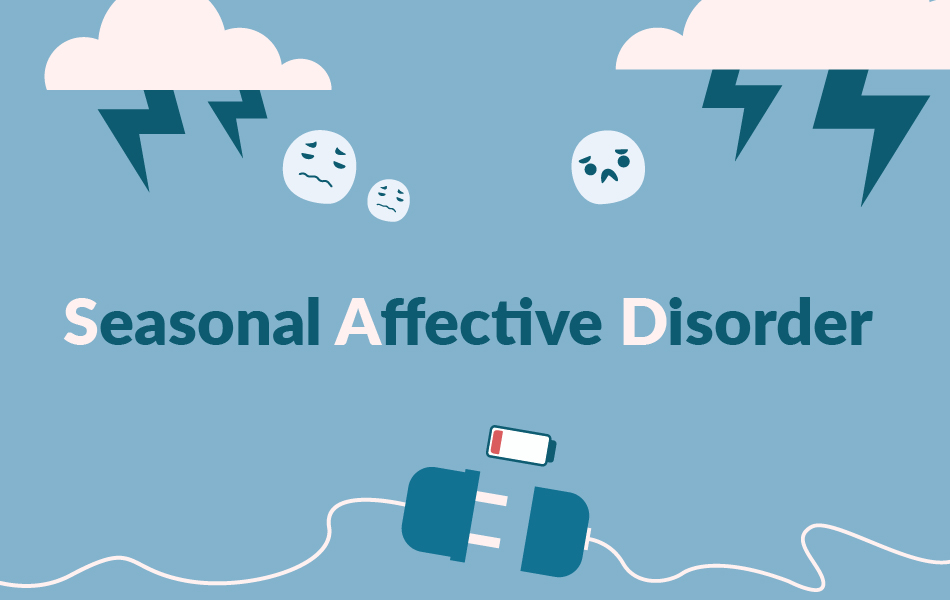
Adopt a healthy lifestyle for better mental health
March 9, 2022
Sleeping disorders explained
March 31, 2022When viewing bipolar disorder from the outside, this mental health condition can be somewhat confusing
If you struggle with manic depression or know someone close to you with this condition, you will most likely see that it is a debilitating chronic condition to live with. Living with bipolar disorder has several challenges, and if you are first diagnosed with it, an unsettling fear for the future might arise. In this month’s blog post, we delve deeper into the subject and discuss the different types of bipolar. And highlight how you can receive the help you need to live a happy and healthy life.
Roughly 1% of the South African population is affected by this disorder. Due to the stigma surrounding mental health, they are either unwilling or unable to get the needed help. Many people also feel that they will face discrimination from friends, co-workers or even family should they be diagnosed with bipolar disorder.
Bipolar is characterised as intense feelings of highs and lows. This means dramatic shifts in a person’s mood, ability to think, and energy levels. The national alliance on mental illness, or NAMI for short, stated that the average onset of bipolar is at the age of 25, but it could occur earlier in adolescence. This condition affects men and women equally and, if left untreated, could worsen over time. That is why it is imperative to find help, should these signs and symptoms become recognisable.
Types of bipolar
Understanding the difference between bipolar disorders can be confusing. Still, the core difference lies in the severity of manic episodes and the number of major depressive episodes experienced. Psychological highs caused by mania and hypomania are characterised by increased energy levels, inflated self-esteem, racing thoughts, impulsive behaviour, lack of sleep, and excessive talkativeness. While severe symptoms can cause impairment in functioning and often requires hospitalisation, hypomania does not. Below we highlight the differences in bipolar disorders.
Bipolar 1:
This is considered a manic episode that lasts for more than a week. A manic episode is regarded as experiencing abnormally irritable or excitable, highly elevated moods. Depressive episodes might also occur and lasts typically two weeks. In severe symptoms, the patient might even require immediate hospital care. It is also possible for a person with Bipolar 1 to experience manic episodes with depressive features and vice versa.
Bipolar 2:
This consists of depressive episodes combined with hypomanic episodes; however, it does not include severe manic episodes such as in Bipolar 1. People with this condition have likely had one major depressive episode and one hypomanic episode in their lifetime. And bipolar two often causes patients to experience multiple major depressive episodes.
Cyclothymia
This is also known as cyclothymic disorder and is considered a mild mood disorder. Cyclothymia disorder involves mood swings between short periods of mild depression and hypomania. These mood swings never reach the severity or duration of major depressive or manic episodes, and men and women are equally affected. Compared to other mood disorders, the symptoms of the cyclothymic disorder are mild.

Symptoms of a manic disorder
- Distractibility
- Impulsive decision-making
- Unusual talkativeness
- Decreased need for sleep
- Euphoria
- Exaggerated self-confidence
- Abnormally upbeat, jumpy or wired
- Increased activity, energy or agitation
Symptoms of major depressive episodes
- Recurring thoughts of suicide
- Severe fatigue
- Unexplained or uncontrollable crying
- Insomnia or hypersomnia
- Loss of interest
Severe bipolar episodes of mania may include symptoms of psychosis which includes hallucinations or even delusions. A person’s extreme moods are usually mirrored through these symptoms, and people with severe episodes can sometimes be wrongfully diagnosed with schizophrenia.
Understanding Mania disorder
Mania is a condition where individuals display high energy levels, moods or behaviour. This change is an elevation from a person’s usual self and is noticeable by others. Symptoms can include a feeling of invincibility, lack of sleep, racing thoughts and rapid talking. A person might also experience false perceptions or beliefs. Many people wonder what is considered abnormal behaviour and what it looks like.
Abnormal manic behaviour that stands out reflects extreme happiness or sadness. Very little is known on what triggers manic disorder because each trigger is unique to the individual. Keeping a mood diary to track how you feel can reveal some triggers.
Common triggers to look out for are:
- Highly stimulating environments (Loud noise, bright lights or large crowds)
- A significant life change
- Substance abuse
- The lack of sleep
- Unusual sex drive
- Coming up with unrealistic plans
- Abnormal impulsivity
Diagnoses
The first step to determine if you might have bipolar is booking a consultation with your medical healthcare provider. After your visit, they will refer you to a mental healthcare specialist such as the psychiatrists at ZwavelStream clinic, and your evaluation may include:
- Physical exam
Your doctor will do a physical exam, including lab tests, to identify medical conditions that could be causing your symptoms.
- Psychiatric assessment
Your doctor may refer you to a psychiatrist who will talk to you about your feelings, behaviour, or thoughts. During this session, you may be required to fill out a self-assessment form, and with your permission, the psychiatrist could want to speak to your family or friends about your behaviour.
- Journaling
Your psychiatrist can request that you keep a daily mood journal. This will help identify the symptoms and help the psychiatrist diagnose and find the correct treatment for you.
- Criteria evaluation
A psychiatrist might compare your symptoms with the criteria for bipolar disorder and any other related disorders in the DSM 5 medical publication.

Risk factors
As mentioned earlier, bipolar disorder can develop in late adolescence or young adulthood and is hereditary. As mentioned, it affects both genders equally, although women tend to have a more challenging time with depression during a depressive episode than men. WebMD wrote an interesting article on bipolar disorder, which stated a combination of medical and mental issues is also more common in women. Those medical issues can include thyroid disease, migraine, and anxiety disorders.
Medications
Medication that is used in treatment usually involves the following:
- Mood stabilisers
- Antipsychotic medication
- Antidepressants
- A combination of antidepressants and antipsychotic medication
- Anti-anxiety medication
Your doctor might prescribe a combination of medications to determine what works for you. Once you start taking your medicine, it is best to keep taking them and follow your doctor’s instructions. If you experience severe symptoms, consult your doctor before you stop taking your medication altogether. In combination with the prescribed medication, a doctor might recommend psychotherapy or otherwise known as talk therapy.
Lifestyle changes that help
There is no replacement for healthy habits, and sometimes a minor lifestyle change goes a long way.
Changes that might help includes:
- Regular exercise
- Healthy sleeping schedule
- Healthy diet
- Monitor your mood daily
- Keeping a journal
- Learning to manage and get rid of stress
- Adopting healthy hobbies
- Reduce or cut out alcohol consumption completely

Coping with bipolar disorder
For some, the stigma surrounding mental health prevents them from reaching out to find the necessary help they need to cope with bipolar disorder. Dealing with this disorder can be challenging, but some strategies might help.
- Learn about the disorder
You can empower yourself through education, and it may provide you with the needed motivation to stick to your treatment plan. Equipped with knowledge, you can educate friends and family on your condition to support you best.
- Stay focused on your goals
Learning how to manage bipolar disorder can take some time. You can stay motivated by keeping your goals in mind and working towards them.
- Find a support system.
Support systems are crucial and help you connect with others facing the same difficulties. You can share your experiences and learn from them.
- Find healthy outlets
Every once in a while we all need to let off steam. Finding healthy ways to channel your energy and letting go of stress or anxiety will make it easier for you to manage your condition.
If you suspect that you might have bipolar disorder symptoms, we urge you to seek medical help. Leaving bipolar disorder untreated could potentially place your health at risk. At ZwavelStream Clinic, our medical health care professionals can support and help you restore your mental health wellbeing.
Our clinic is different to others because we have made a point of destigmatising the mental healthcare environment. Here you can find treatment in a peaceful and relaxing atmosphere, surrounded by nature in the Bronberg area of Pretoria east. Speak to a medical professional today or book an appointment with a doctor, psychiatrist or psychologist.





